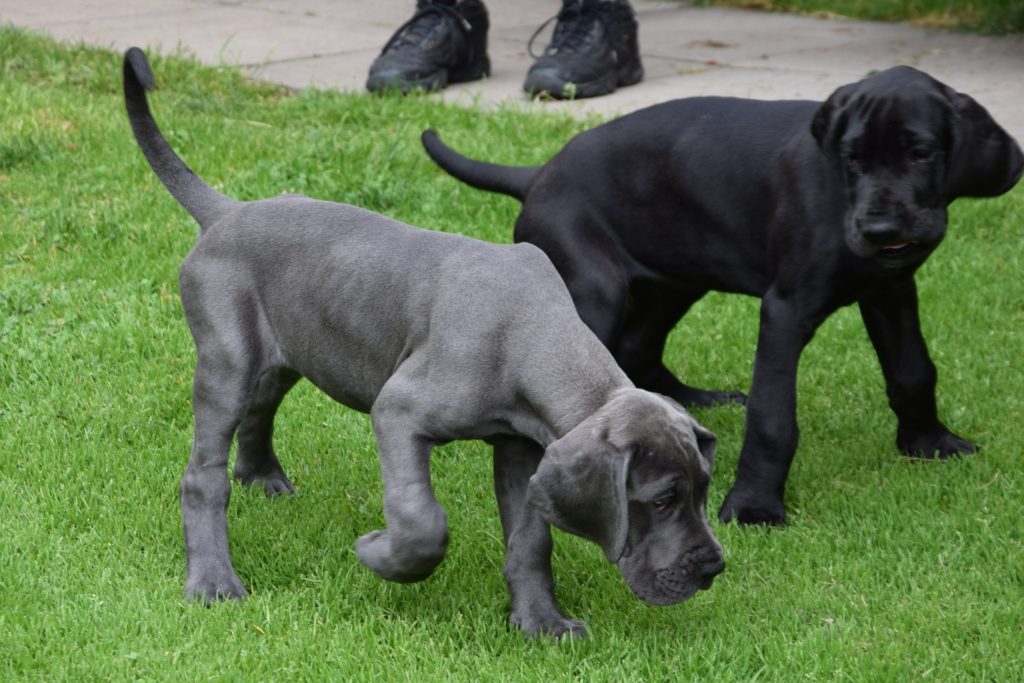Before adopting a Great Dane, make sure to do some research on the breed so you can be an educated pet owner and learn everything you need to know to keep your pup happy and healthy. Factors like their personality traits, exercise requirements, and trainability are all important components that can provide you with key insight on your future pet.
Another element that is crucial to research is Great Dane health issues and problems. While your gentle giant may be as healthy as can be, it is still important to recognize the signs of any canine health problems that may arise later on in life. Being an informed pet owner will help you spot any early signs of health problems that can cause more severe issues later one in your pet’s life.
Most Common Great Dane Health Issues
Hip Dysplasia
Canine hip dysplasia is a common health issue that is caused by an abnormal formation of the hip socket. In a healthy hip socket, the bones and the joints glide together and easily form into place. When hip dysplasia is present in a dog, the bones and joints rub and grind against each other during regular hip movement which can cause pain, lameness, and even arthritis.
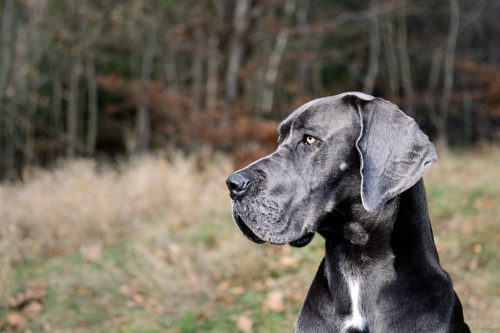
If your dog is suffering from hip dysplasia, there are a number of symptoms he will be showing. These symptoms include a decrease in activity, looseness in the hip joint, loss of thigh muscle mass, noticeable pain, trouble in getting up, decreased range of motion, along with many other symptoms.
Separation Anxiety
While most Great Dane health problems are thought to be physical, they can also suffer from mental issues as well. Separation anxiety is a common concern for many Great Danes owners.
These pups are very dependent on their owners, and their overall happiness and well-being will be the result of that. If you are working all day or are not providing your Great Dane with lots of attention, there is a high chance that he will develop canine separation anxiety.
If you think your dog is suffering from separation anxiety, there are several signs that you can look for. Common symptoms of separation anxiety include excessive barking, destructive behavior, bathroom accidents around the house, and trying to escape. All these symptoms are your dog’s way of crying out for attention.
This sensitive dog breed can become emotionally unstable, especially when they are bored or are not receiving enough exercise. The best way to prevent this from happening is by making sure your furry friend gets plenty of love and attention on a daily basis. Walks around the block, car rides to the grocery store, and nightly cuddles are all great ways to make your Great Dane feel loved and appreciated.
Bloat/ Torsion/ Gastric GDV
Bloat, or Torsion, is a common condition that occurs in large, deep-chested breeds. Unfortunately, that means the Great Dane is highly susceptible to developing this life-threatening condition. Dogs are at risk when they eat too much food, drink too much water, or exercise heavily right after a large meal.
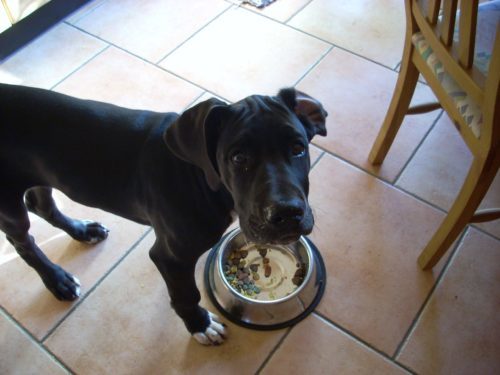
Bloat occurs when the stomach fills with air, gas, or food, and places excess pressure on nearby organs.
Symptoms of bloat may include difficulty breathing, a tear within the stomach wall, pressure against other organs, or even restricted blood flow to the heart or stomach lining.
In more extreme cases, the stomach can actually twist, which is called GDV, or Gastric Dilatation-Volvulus. Once the stomach twists, the dog is unable to expel the gas or air in the stomach through belching or vomiting.
GDV can then cause blood pressure to drop, and the blood flow to the heart can become impeded. Once this stage occurs, the dog can go into shock which eventually leads to death.
If you think your Great Dane is suffering from Bloat or GDV, make sure to take him to the closest veterinarian as soon as possible.
GDV is a life or death situation that deserves immediate attention. As a precautionary measure, never take your Great Dane for a walk after he eats, and make sure he consumes his food at an average speed.
Development Issues
Since the Great Dane grows so quickly, they are prone to development issues, especially during their early years of life. If a Great Dane over-exerts themselves through challenging exercises, they can severely injure themselves, causing serious health problems later on.
That’s why it is not recommended to run with your Great Dane until he is 18 months to two years of age. Once his bones and joints have properly formed, he is then able to go on runs and participate in more strenuous exercises.
Development issues can also occur depending on their diet. These problems arise when their diet has too much calcium, protein, or other supplements. To prevent this from happening, consult with your veterinarian to see which food works best for your Great Dane’s age.
Ear Infections
Just like most dogs with large ears, the Great Dane is susceptible to developing ear infections and other ear issues. Most ear infections are caused by a yeast or bacterial infection which causes pain and itchiness, Just like in humans, ear infections are very common and are easily treatable.
Canine ear infections are usually the result of a larger problem such as allergies, hypothyroidism, Malassezia, Aspergillus, or trauma. Other more minor causes of ear infections are when foreign objects get lodged inside the ear, tumors or polyps form, or when ear mites are present.
Head shaking, abnormal discharge from the ear, hair loss around the ear, and physical pain are the most common signs of ear infections in dogs.
To prevent ear infections from occurring in the first place, check and clean your dog’s ear on a regular basis. Use a damp cotton ball and a veterinarian-recommended solution to clean in and around the ear. This will help to prevent any debris, hair, or dirt from entering the ear canal.
Hypothyroidism
This condition occurs when the body is unable to produce enough thyroid hormones. This can cause serious harm to your dog’s body because the thyroid is in charge of regulating their metabolism. Dogs who are suffering from hypothyroidism will have a slower metabolism rate than they should.
Common symptoms of canine hypothyroidism include hair loss, a thinning coat, weight gain, intolerance to the cold, muscle loss, and lethargy. Luckily, for dogs suffering from this condition, they can easily be cured once they have been properly diagnosed.
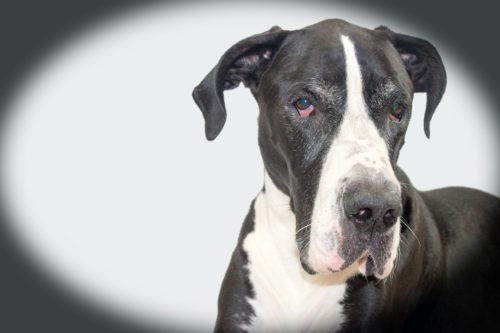
Heart Disease
Although it may surprise you, dogs can develop heart disease just like their human counterparts. The two types of heart disease a dog can be diagnosed with are acquired heart disease (more common) or congenital heart disease (rare). Heart disease can be caused by a number of different factors including age, infection, or injury.
Although there may not be pronounced symptoms that are associated with heart disease, there are a few signs to look out for such as coughing, shortness of breath, weight and appetite loss, fainting, weakness, or a change in behavior.
The best way to prevent heart disease from occurring is by feeding your Great Dane a wholesome and nutritious diet and by making sure he has an adequate amount of exercise on a daily basis.
It is also important to take your dog in for regular check-ups with your local veterinarian. That way, if your dog is developing heart disease, your veterinarian will be able to spot it in the early stages and provide you with the right information on how you can slow down the process.
How to Keep Your Great Dane Healthy
Although it’s impossible to prevent every ailment that can inflict a Great Dane, you can still take precautionary measures to keep your pup as healthy as possible. A few recommendations to keep a Great Dane in tip-top shape are to feed him a balanced diet, give him daily exercise, and take him in for frequent check-ups with your veterinarian.
Balanced Diet
What you feed your Great Dane can have a major impact on his overall health. That’s why it’s imperative to find a dog food that contains all-natural and wholesome ingredients. When reading the label on your dog’s food, try to stay away from any products that contain preservatives, fillers, corn, gluten, or animal by-products. These ingredients can be difficult to digest and should not be fed to your pet on a regular basis. It is also important to keep a bowl of fresh water available at all times to prevent dehydration.
Daily Exercise
Just like in any breed, daily canine exercise is a critical component of your dog’s health and longevity. As a general rule of thumb, make sure your dog is getting at least 30 to 60 minutes of walking and playtime a day. Daily walks not only promote his metabolism, but it will build strong muscle mass to keep him healthy. Best of all, these walks are an excellent way for you and your dog to bond together.
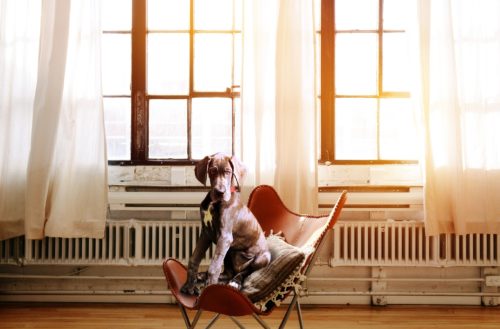
While Great Danes are still puppies, it is recommended to take them for a walk for at least 60 to 90 minutes a day.
With that being said, do not try to overexert your Great Dane puppy before he is ready. Overly exercising your Great Dane can cause negative effects and create injuries that could have easily been avoided.
Frequent Check-ups
Unfortunately, many people only take their pet to the vet when an issue is already present, which usually means it’s too late. As a pet owner, it is critical to take your dog to the vet for his regular check-ups.
This is the only time you can find out if your Great Dane is suffering from any underlying issues that may lead to larger problems. At the very minimum, take your dog to the veterinarian at least once a year.
If you are thinking about bringing home a Great Dane, you can expect to receive a courageous, loyal, and gentle companion that will love you for years to come. In order to return their unconditional love, make sure to keep your Great Dane as healthy as possible. As long as you provide him with daily exercise, frequent check-ups to the veterinarian, and feed him a nutritious diet, you will be able to increase his chances of having a long and happy life.

